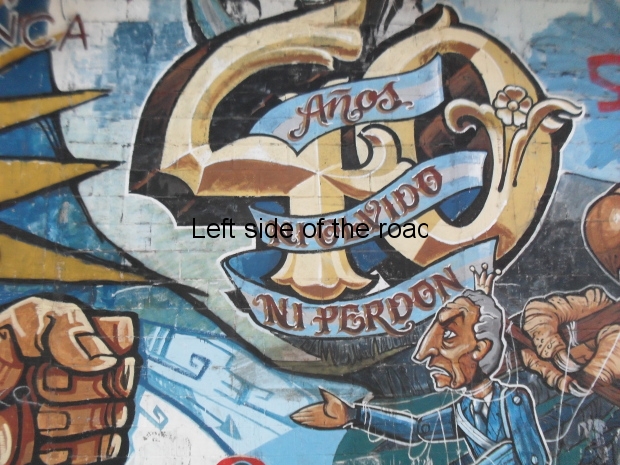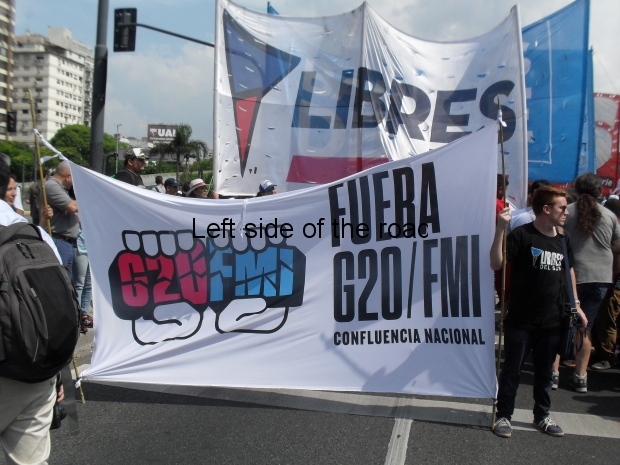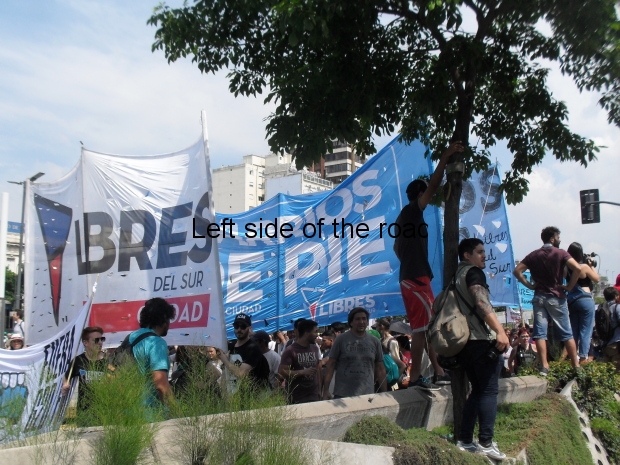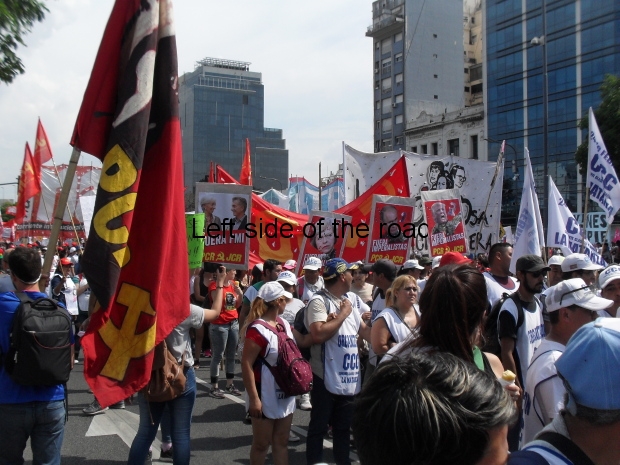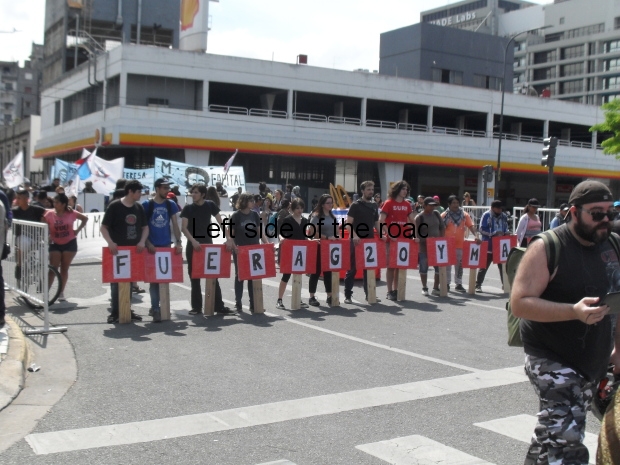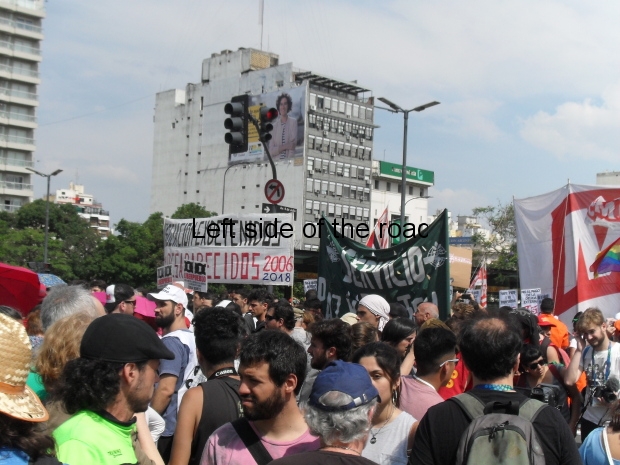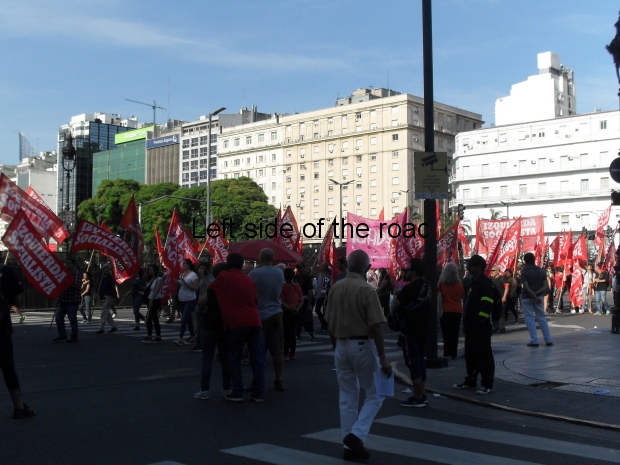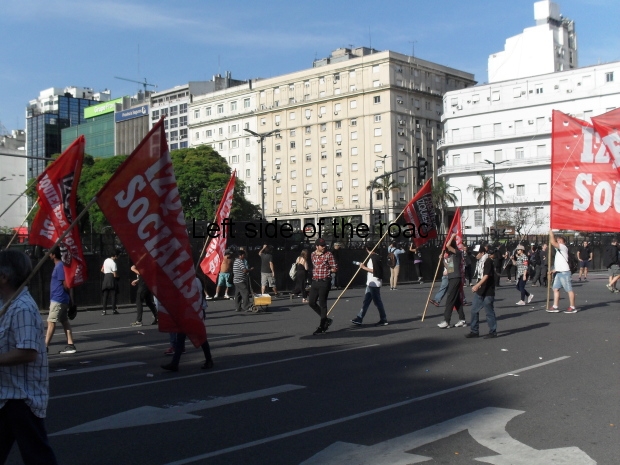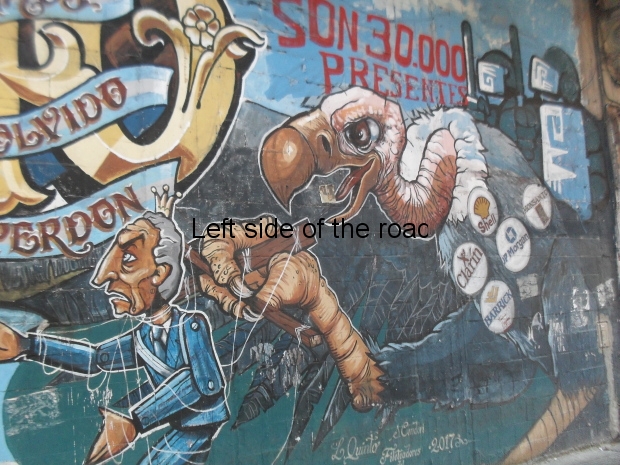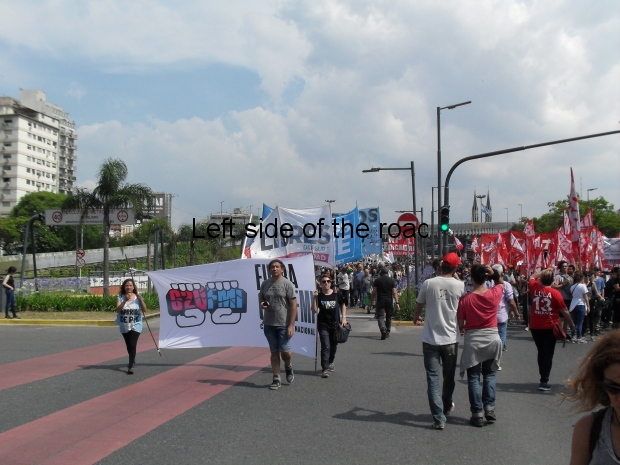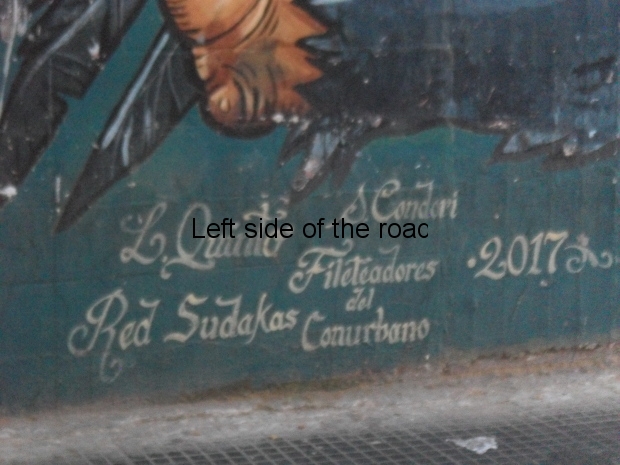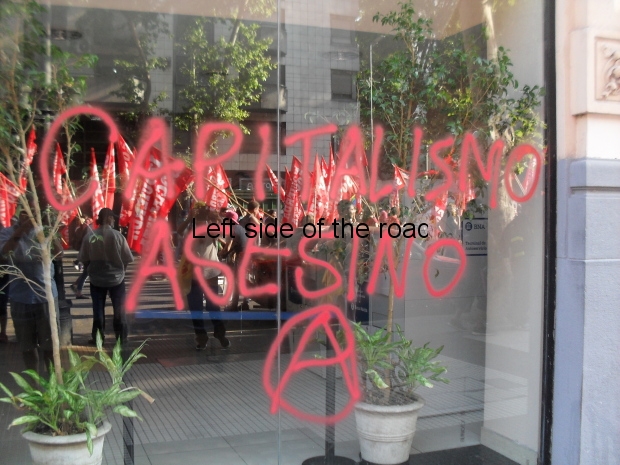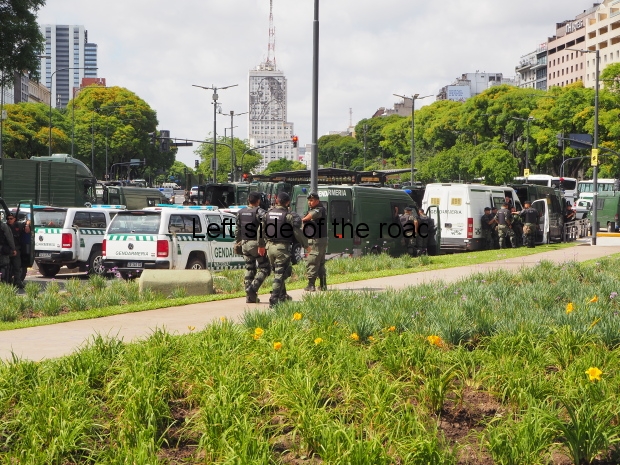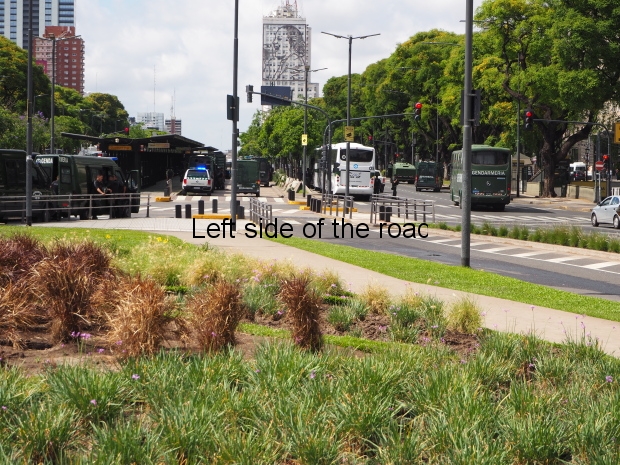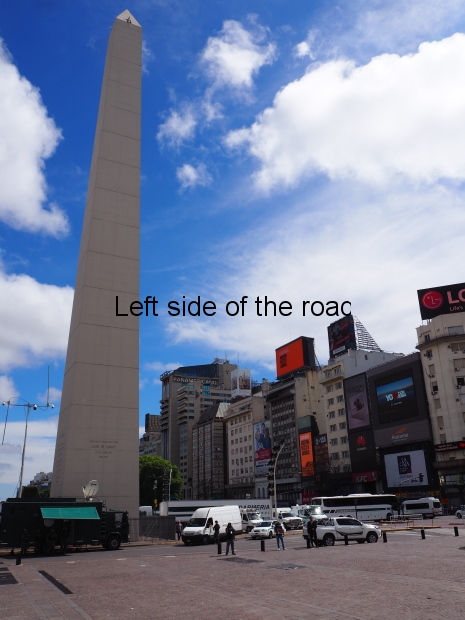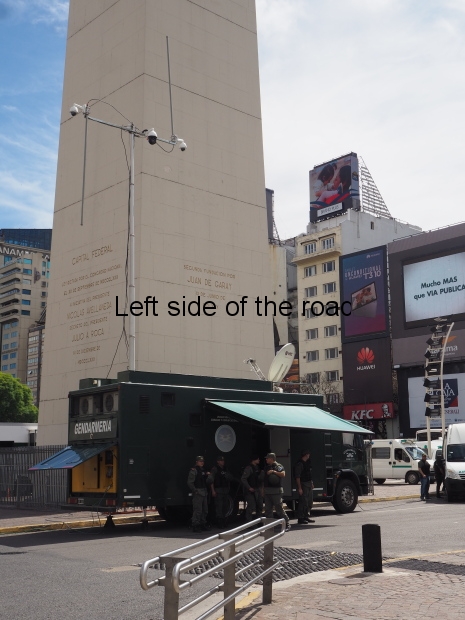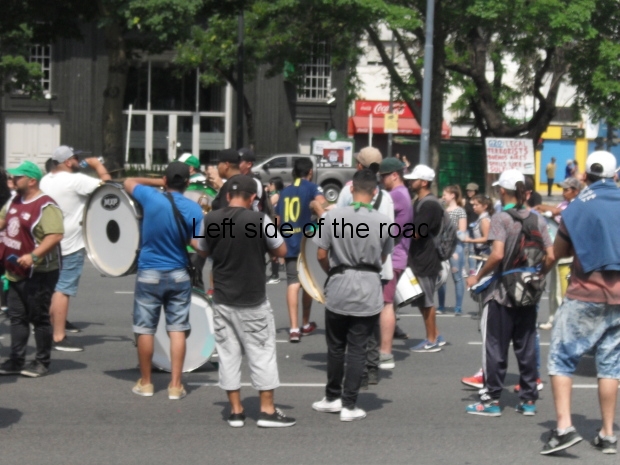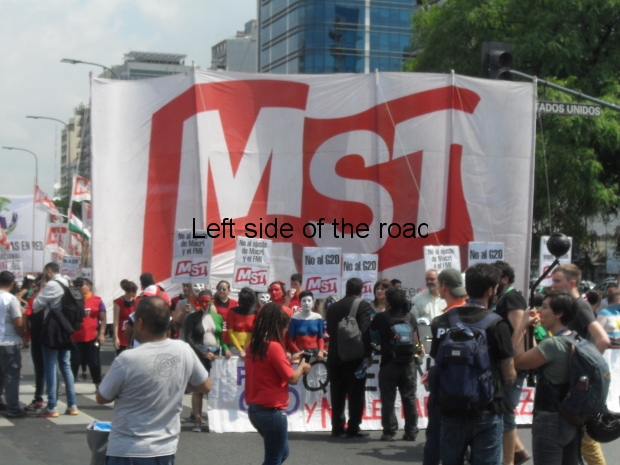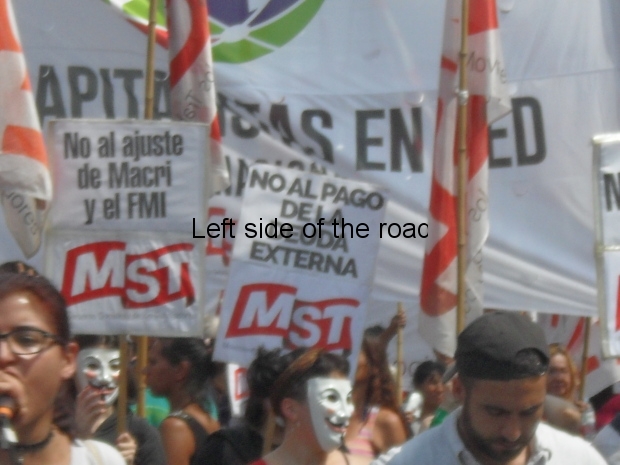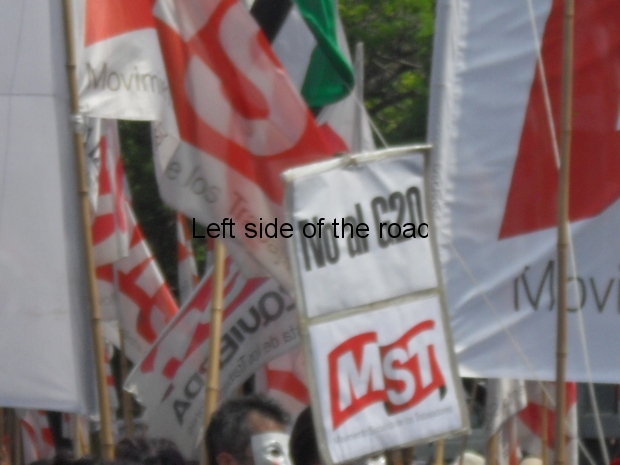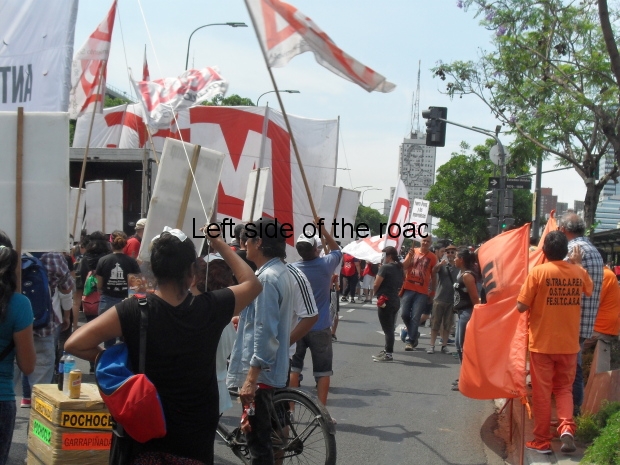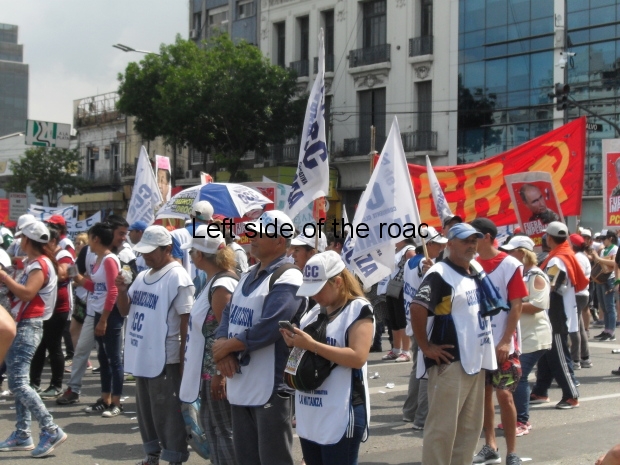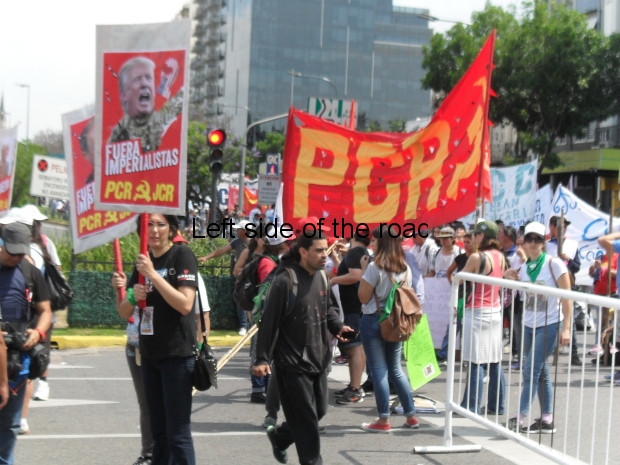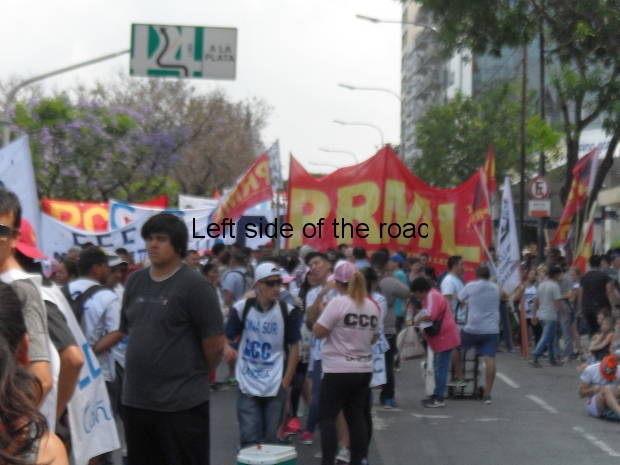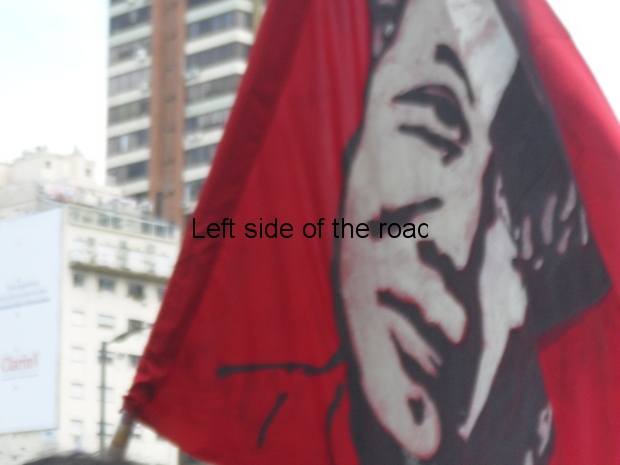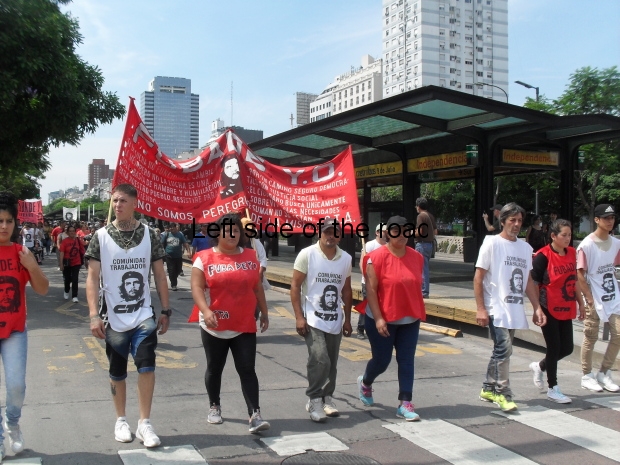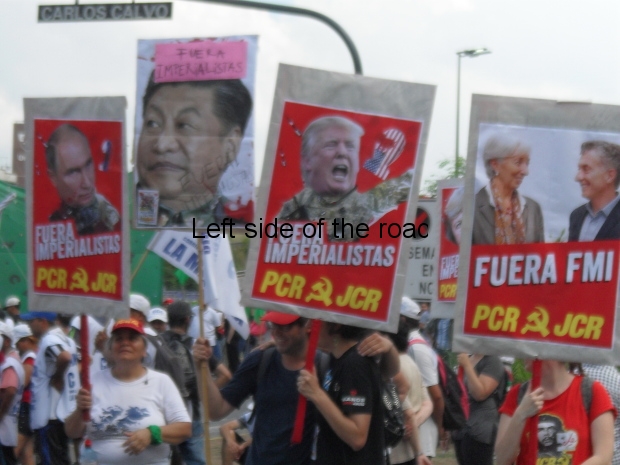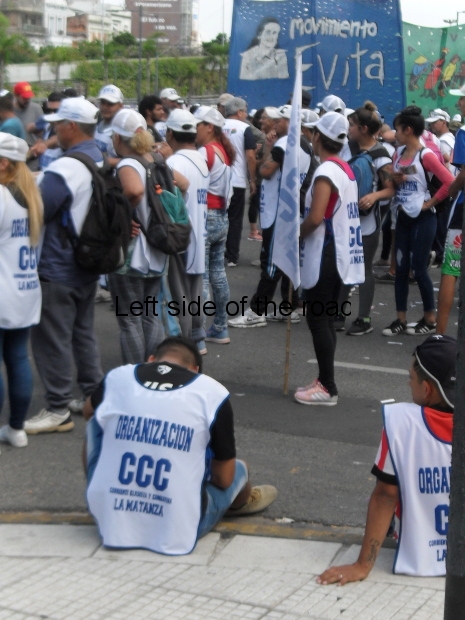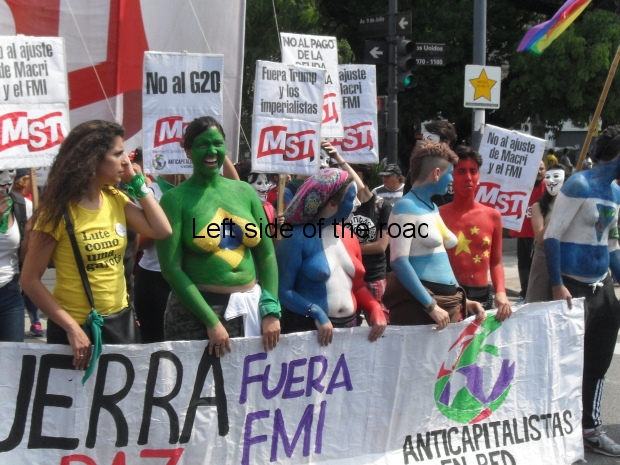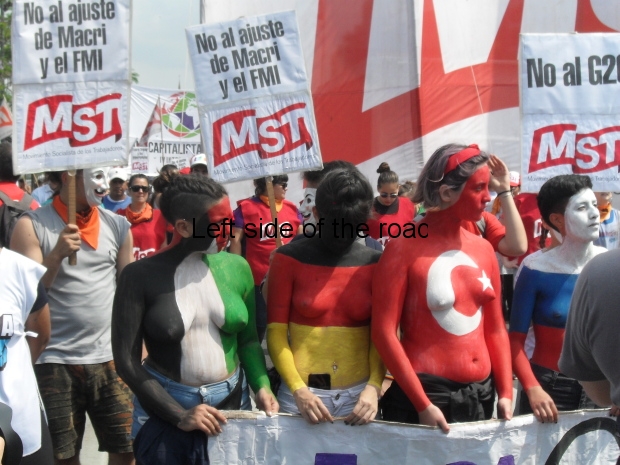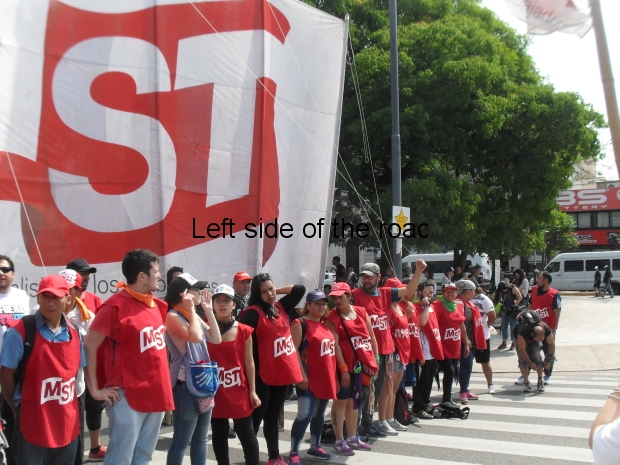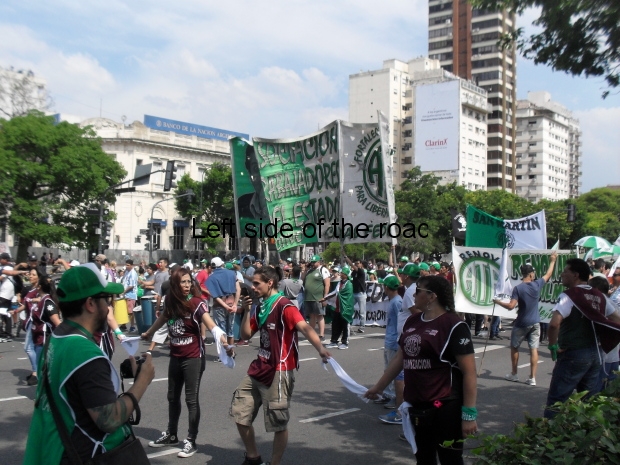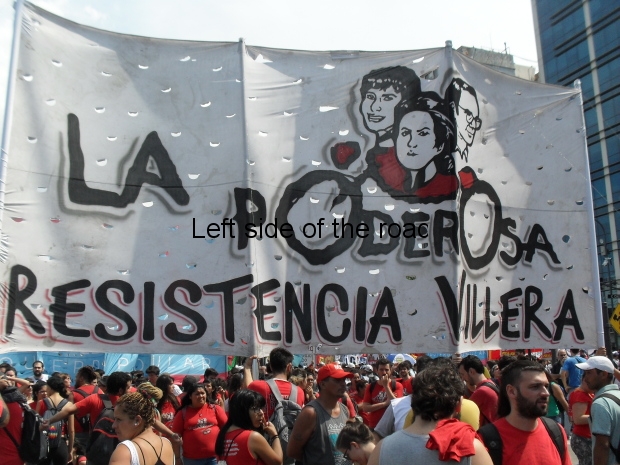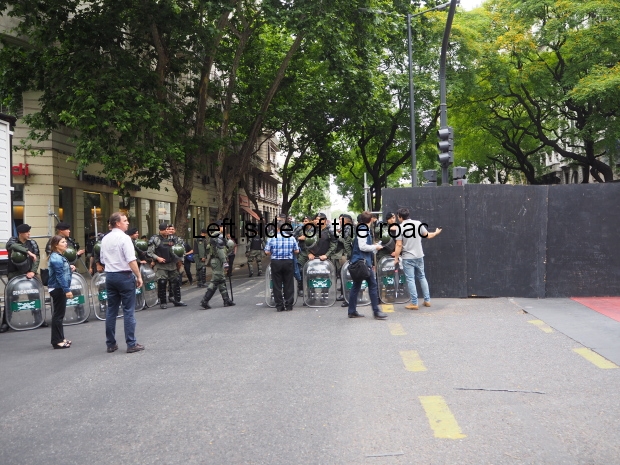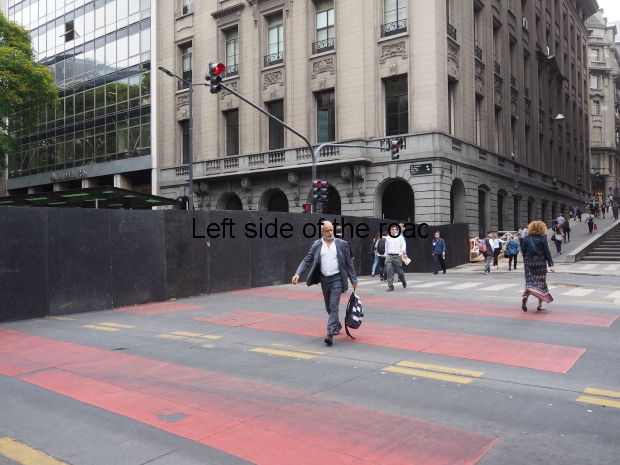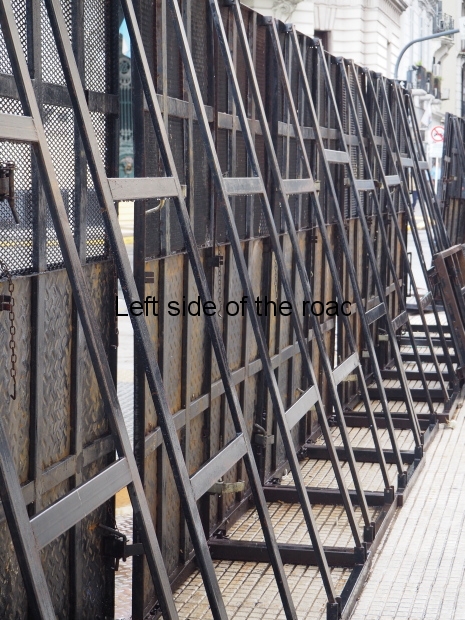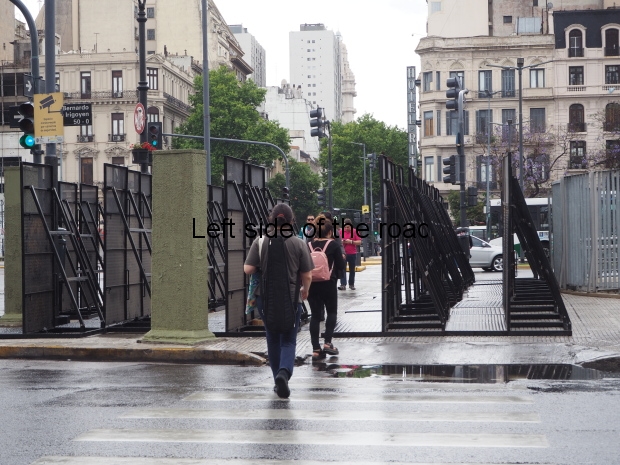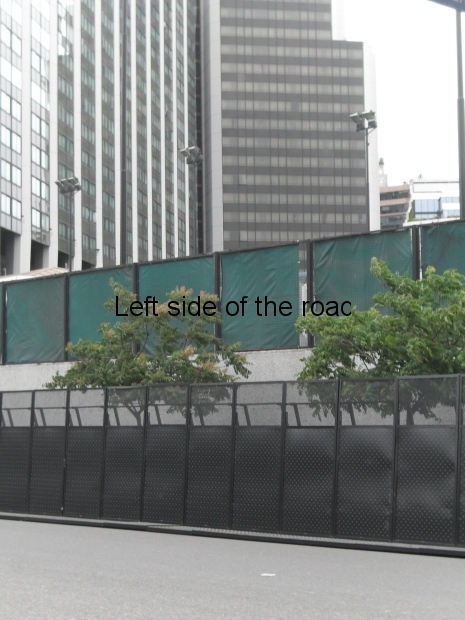
Anti G-20 Demonstration – November 2018
The Anti G-20 Summit Demonstration
The Argentinian State had done all it could to reduce the scale of the demonstrations called by local workers’ organisations against the G-20 Summit but still thousands of people turned up to show their hated and distrust of the oligarchs who had, effectively, taken over their city.
As I’ve stated before public transport to and from the city centre was virtually non-existent. In the morning there was more movement than I expected but even so that was very limited. As the demonstration assembled and the riot police got prepared those few access roads were closed down. Vehicular traffic was virtually zero and pedestrians had a much longer walk from certain parts of the centre. More as a matter of design, I would have thought, rather than ignorance meant that there was no clear information of what exactly was closed.
The meeting up place was at the crossroads of Avenidas 9 de Julio and San Juan, at the very edge of what had been declared as a no-go area. On the other hand the very wide streets, devoid of vehicles made it a good, and safe, place to start.
I don’t intend to write too much about the demonstration itself providing the reader with the opportunity to see a number of videos which, I hope, capture the sense of occasion, the number of people involved, the colour, the noise and the intensity of feeling that the holding of this short summit in Buenos Aires had created amongst the working population.
Here I want to make a number of observations which came to me in the few hours I was on the street as well as what I’ve learnt from other information that I been able to gain by the very fact of being here.
The official start time was 15.00 (I arrived about 14.30) and already there were a lot of people lining up behind their respective banners. I assume that a later than normal start (midday I believe is the norm) was to allow people to get from the outskirts of town. In the blog that talked about the demonstrations in the centre of town which I came across, purely by chance, on Monday I mentioned how Argentinians are almost tribal when it comes to sticking with their group.
The principal organiser seems to have been the MST (Unemployed Workers Movement) as they held the pole position and a line of their stewards were in place to prevent any other group take the space planned for their about to arrive supporters. I did notice a few confrontations which didn’t come to violence but there were definitely stand-offs with people holding their corner.
Although the MST help the lead they did cede to a small group that included a couple of Madres of the Plaza de Mayo. Obviously out of respect for their long-term struggle but I would have thought it unlikely the women would have been there for more than a token period of time. It was a hot afternoon and demonstrations take an age to get a short distance.
As a publicity stunt the first line of the MST contingent was a line of women carrying the groups slogan against the G-20. Eight of them were bare-breasted and had the top parts of their bodies and faces painted in the colours of eight of the countries represented at the summit – the UK wasn’t amongst that group of eight. I assume the plan would have been to represent the twenty but they couldn’t get enough volunteers – one space was taken by a male with false, painted breasts.
By the number of press photographers shoving to get the right angle, and the number of interviews I saw as I went back and forth, their tactic worked. I’m sure those images went around the world – even if the message that the demonstration was giving to the world might not have been. There are some images in the gallery below.
I decided to record the event rather than be part of it. I would have walked alone and that didn’t make sense. By seeing the totality of the march I was able to get a sense of the number of political parties, obviously from the ‘left’, that exist in Argentina. I’m an outsider and haven’t really studied Argentina but I’m sure the differences between some of those groups are like the stones on an Incan temple, you would have difficulty in pushing a knife between them.
When you have a sizeable contingent which are supposed to be a United Front and then there are still separate groups then the united front isn’t very united.
I’m certainly not pushing for unity for the sake of it but the only winners with this division of the left throughout the world is then very people and interests this demonstration was against.
In all gatherings in Latin America, and I’ve seen it here whenever more than a handful of people get together, it’s not long before the street hawkers are swooping. With thousands of people standing around in the sun for a few hours the ice cream, cold drinks and even the sandwich sellers were making a killing. One near to me can be seen at a table where they were making sandwiches to order can be seen on one of the videos.
Police presence was very low-key until the march took the turn down the road to the Congress building. What the authorities didn’t want was for anyone to go straight ahead. This is the logic of the road but down there the Summit was being held.
To prevent that happening a wall of these metal ‘vallas’ had been created, the ‘L’ shaped metal Meccano like barriers which could be made as long as you like. Behind this barrier could be seen the heads of some of the 20,000 police who were there to ‘maintain order’. Their helmeted heads peeking out like Kilroy. Behind them stood all the technology developed to be used against people who a modern state can provide – the power of which I wouldn’t have a clue.
(I did pass small groups of police in riot gear along the route of the march as I overtook the main march after ending my recording. But they were discreet and many of the marchers would have been unaware of their presence, yet there was one group I passed who were being taunted with the chant below.)
On reaching this area many of the groups would start a chant which basically meant that what they wanted was for the federales to ‘fuck off’. I’ll try to (eventually) post that chant here.
And that last point is worthwhile stressing. Demonstrations, for those who can remember when people were prepared to fight for what they believed in and against injustice were like being in a morgue. Some people would chant something but after a while everyone else would get bored and silence would resume.
Not in Buenos Aires. A singer, with amplification, would start a chant and it would go on forever. Often accompanied by drummers and other instruments. When I say forever I mean from before the march moved off to when I arrived at whatever its eventual end would have been. And this was all amongst all the different groups.
The march moved off, hesitatingly, at just after 15.30 and arrived at the Congress Building about two hours later. From there the march broke into different groups following a route they had planned beforehand, taking the message to the people living in that area and then (I learnt afterwards) heading towards the Teatro Colon where a Gala was to be held at more or less that time. I’m sure the ‘dignitaries’ had all arrived there in plenty of time to avoid being molested by the hoi poloi.)
I made a mistake in my last post saying that this Gala was to be held on the Saturday night. That would have meant them staying in the country for a few more hours and no one really wanted to do that. Once the photo calls and press conferences had been endure it was time to go home.
I had a long diversion to get around the blocked streets but ended up in a bar a little before 19.00. I then had the very dubious ‘pleasure’ of being able to watch this Gala performance.
First came the group photo with all the world’s most powerful ‘leaders’ having made sure they weren’t by their worst enemy.
Then the Gala.
As I watched this mercifully short (about 40 minutes) performance I honestly started to feel sorry – but only for a few seconds – for these people who were forced to watch such performances and do so with a smile. It was supposed to have represented Argentinian culture, especially the tango dance and its regional varieties. But I though the choreography was banal and generic. What might work with a couple doesn’t necessarily do so on a full stage. I’m sure all the 19 ‘heads of state’ and the EU would have liked to have been anywhere else.
(But the theatre looks like it would merit a tour once the hype of the weekend is forgotten. Perhaps when I return to Buenos Aires later in my stay.)
Then they all went off for a meal, the cost of which would have kept an Argentinian worker in food for a year.
They do it because they can. Why do we let them?
(There are a series of ten videos, of varying length, which I’ve posted on YouTube. The first of these can be found at The mass demonstration against the G-20 in Buenos Aires, November 30th 2018.)

